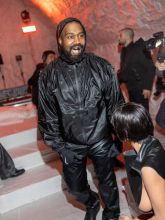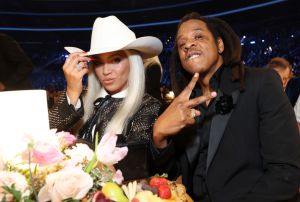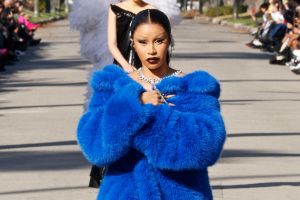Silent March Held In NYC To End Police “Stop-And-Frisk” Tactics Against Blacks
A silent march by thousands of people in New York City protesting police “stop-and-frisk” tactics on Sunday was punctuated by an explosion of loud voices.
“We’ve got to fight back, we can’t be silent!” a group of activists shouted as they passed the home of Mayor Michael Bloomberg, just off Fifth Avenue.
But the rest of the quiet, slow procession from Harlem down the avenue was interrupted only by the tapping of feet on the pavement and birds chirping in trees along Central Park. Nearly 300 civil rights groups were represented in the 30-block walk, from elected officials and labor union members to New York residents angry about how they’re being treated when they walk the streets.
Critics say the NYPD’s practice of stopping, questioning and searching people who police consider suspicious is illegal and humiliating to hundreds of thousands of law-abiding blacks and Hispanics. Last year, the NYPD stopped close to 700,000 people, up from more than 90,000 a decade ago. Bloomberg’s town house on East 79th Street was the proclaimed destination of the Sunday march. The home and sidewalk in front were blocked off by police barricades, and officers would not say whether the mayor was home.
As the march wound down, with a lineup of buses waiting to take protesters away, tensions between police and protesters suddenly escalated into clashes. The Rev. Al Sharpton and his National Action Network, the NAACP and Local 1199 of the SEIU union were the leading organizers of Sunday’s march. Resting on a bench while others walked, Samantha Tailor, a mother of two from the Bronx, said her 16-year-old son came home from school “very upset” last month after he and two friends were stopped on their way to classes that morning. That was the second time for her son in recent months, she said. “Thank God, he had his ID,” Tailor said. “He wasn’t doing anything wrong, just walking to school.” And when officers pushed the three against a wall and went through their pockets, “he told me he was very quiet, very humble.” Tailor said she had taught him what to do if he were stopped.
The practice of silent marches dates to 1917, when the NAACP led a protest through New York against lynchings and segregation in the U.S. “We are black, white, Asian, LGBT, straight, Jewish, Muslim and Christian,” New York City Council member Jumaane Williams said before Sunday’s march began, standing alongside American Federation of Teachers President Randi Weingarten. “Mayor Bloomberg has been our great uniter. We’ve been screaming loudly, and he hasn’t heard us, but hopefully he’ll hear the deafening silence.”
Last year, the NYPD stopped more than 685,000 people, mostly black and Hispanic young men — up from about 97,000 a decade earlier, according to the New York Civil Liberties Union, which also was to join the march. About half of those stopped are frisked, and about 10 percent are arrested. “In most cities, when you ask who gets beaten up by the cops, the answer comes back: black people, people of color, and the gay community,” Benjamin Jealous, head of the National Association for the Advancement of Colored People, said on MSNBC.
Jealous said that “the notion that this make us safer really defies logic,” noting that other large cities have cut their crime rate without resorting to stop-and-frisk methods. Bloomberg and Police Commissioner Ray Kelly defend the policy, saying the program keeps guns off New York streets and helps stop crime before it happens.








Comments
Bossip Comment Policy
Please read our Comment Policy before commenting.